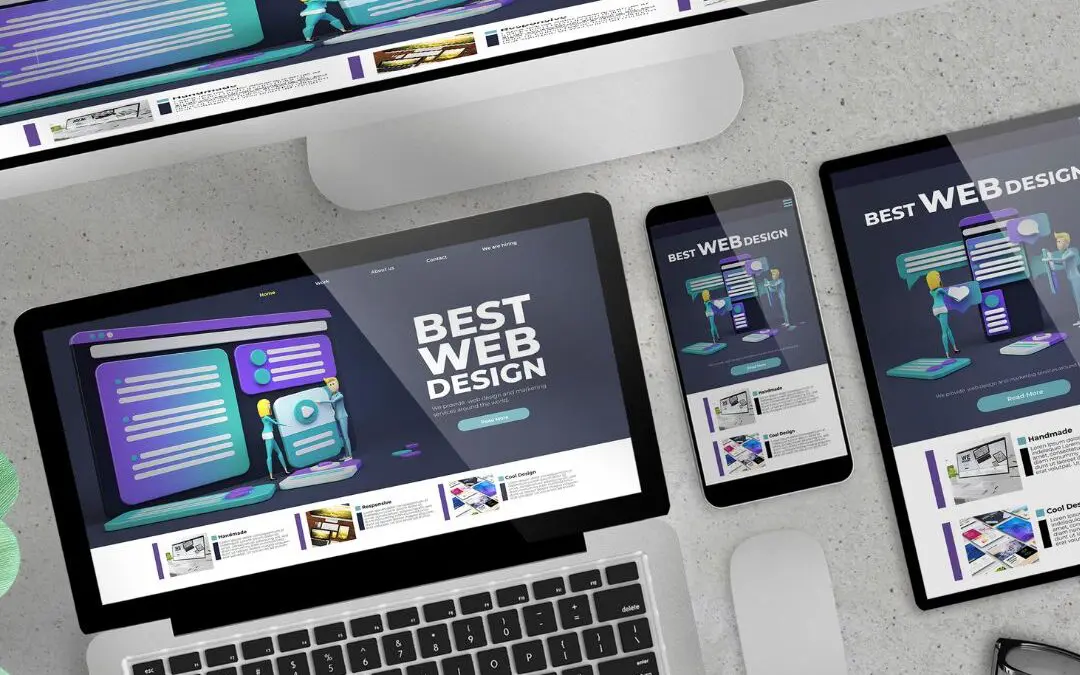The Ultimate Guide to Creating a Stunning Website Design: Tips, Tricks, and Best Practices
Welcome to the ultimate guide to creating a stunning website design! Whether you’re a seasoned web designer or a beginner looking to build a website from scratch, this comprehensive guide is packed with tips, tricks, and best practices to help you create a visually captivating and functional website.
In today’s digital era, a website’s design is critical in attracting and retaining visitors. It’s not just about having a pretty website; it’s about creating an engaging user experience that drives conversions and establishes a strong online presence.
Throughout this guide, we’ll explore the key elements of website design, from choosing the right color palette and typography to optimizing your layout for maximum impact. We’ll also delve into the importance of mobile responsiveness, user-friendly navigation, and effective call-to-action buttons.
Additionally, we’ll provide expert insights into the latest design trends and offer practical advice on choosing the right tools and platforms to bring your vision to life.
So, if you’re ready to improve your website design skills, let’s start creating a stunning website that captures attention and delivers results!
The Importance of Website Design
When it comes to building a successful website, the design is everything. Your website’s design is visitors’ first impression of your brand, and it can either make or break their decision to stay and explore further. A well-designed website grabs attention and communicates your brand’s personality and values.
One key aspect of website design is usability. A website that is easy to navigate and understand will keep visitors engaged and encourage them to explore more pages. On the other hand, a poorly designed website with confusing navigation and cluttered layouts will frustrate users and lead them to abandon the site.
In addition to usability, website design affects your website’s search engine rankings. Search engines like Google consider user experience a ranking factor, and a well-designed website that provides a positive user experience is more likely to rank higher in search results.
Before diving into the nitty-gritty of website design, it’s important to understand the fundamental principles that guide design decisions. These principles help create a cohesive and visually appealing website that effectively communicates your message to visitors.
One key principle of good website design is visual hierarchy. Visual hierarchy refers to the arrangement of elements on a page in a way that guides the user’s attention and emphasizes important information. Using size, color, contrast, and positioning, you can create a clear hierarchy that leads users through the page and highlights the most important content.
Another important principle is balance. A well-balanced website design creates a sense of stability and harmony. Balance can be achieved through symmetrical or asymmetrical layouts, depending on the desired effect. It’s important to distribute visual weight evenly across the page to avoid a lopsided or cluttered appearance.
Contrast is another principle that helps create visual interest and hierarchy. Contrast is the difference between color, size, shape, and texture elements. Using contrast effectively, you can draw attention to important elements and make them stand out.
User Experience (UX) Design and Its Impact on Website Success
User experience (UX) design is a crucial aspect of website design that focuses on creating a positive and seamless experience for visitors. UX design encompasses various elements, including layout, navigation, content, and functionality, all working together to make the website easy to use and enjoyable for users.
One of the key principles of UX design is simplicity. A simple and intuitive website layout makes it easier for users to find what they’re looking for and navigate the site. Avoid clutter and excessive elements that can overwhelm and confuse users.
Navigation is another important aspect of UX design. A well-designed navigation menu helps users easily navigate the website and access the necessary information. It’s important to keep the navigation menu clear, concise, and easily accessible on every page.
In addition to navigation, UX design also focuses on the content and its presentation. The content should be organized logically and structured, making it easy for users to scan and understand. Use headings, subheadings, and bullet points to break up the text and make it more digestible.
Creating a visually appealing website is essential to capture visitors’ attention and keep them engaged. Here are some best practices to consider when designing your website:
1. Optimize Website Navigation and Structure
A well-organized and intuitive navigation system is crucial for a seamless user experience. Aim for a clear and consistent navigation menu that is easy to understand and use. Consider using drop-down menus or mega menus for websites with many pages. A search bar should also be included to help users quickly find specific content.
When structuring your website, think about the logical flow of information. Group related pages together and create a hierarchical structure that makes it easy for users to navigate through different sections of your website. Use breadcrumbs to show users their current location within the site and allow for easy navigation back to previous pages.
2. Choose the Right Color Scheme and Typography
Color and typography play a significant role in creating a visually appealing website. Choose a color scheme that aligns with your brand identity and evokes the right emotions in your target audience. Use colors strategically to highlight important elements and create visual interest. Consider the psychology of color and how different colors can impact user perception.
When it comes to typography, select easily read and visually pleasing fonts. Avoid using too many different fonts, as it can make your website look cluttered and unprofessional. Stick to a maximum of two or three fonts and use them consistently throughout your website.
3. Incorporate Multimedia Elements
Adding multimedia elements like images, videos, and animations can enhance your website’s visual appeal and make it more engaging for users. Use high-quality images relevant to your content and optimize them for the web to ensure fast loading times. Consider using videos to showcase products or services or to provide tutorials and demonstrations.
Animations can also add a touch of interactivity to your website. However, use them sparingly and purposefully to avoid overwhelming the user or slowing down the website’s performance.
4. Mobile-Friendly Website Design and Responsive Layouts
With the increasing use of smartphones and tablets, it’s crucial to design your website as mobile-friendly. A responsive website adapts to different screen sizes and ensures the content is easily accessible and readable on any device. This improves the user experience and boosts your website’s search engine rankings, as Google prioritizes mobile-friendly websites in mobile search results.
To create a responsive layout, use a grid-based design that automatically adjusts the placement and size of elements based on the screen size. Test your website on different devices and screen sizes to ensure it looks and functions properly across all platforms.
5. Testing and Optimizing Your Website Design
Once you’ve created your website design, it’s important to test it thoroughly to identify any usability issues or areas for improvement. Conduct user testing sessions to gather feedback and observe how users interact with your website. Use analytics tools to track user behavior and identify any bottlenecks or areas of high bounce rates.
Based on the insights gathered from testing, make necessary adjustments to optimize your website design. This could involve tweaking the layout, improving navigation, or refining the visual elements. Continuously monitor and analyze your website’s performance to ensure it delivers the best user experience possible.
Conclusion: Implementing Effective Website Design Strategies
Creating a stunning website requires careful consideration of various elements, from color and typography to layout and navigation. By following the principles of good website design and incorporating best practices, you can create a visually appealing website that captures attention and delivers results.
Remember that website design is an ongoing process. As technology and design trends evolve, staying updated and adapting your website design is essential. Regularly evaluate and optimize your website to ensure it remains visually captivating, user-friendly, and aligned with your brand’s goals.
So, armed with the knowledge and tips shared in this guide, create a stunning website that looks beautiful and provides an exceptional user experience. Your website is your online storefront; a well-designed one can make all the difference in attracting and retaining visitors. Happy designing!


